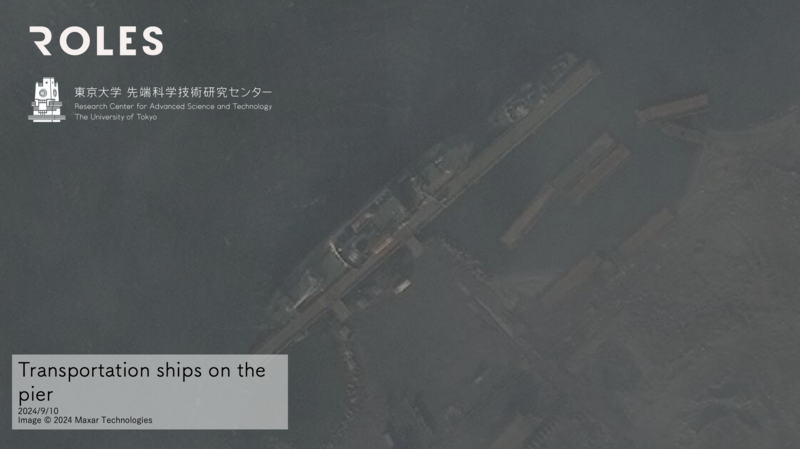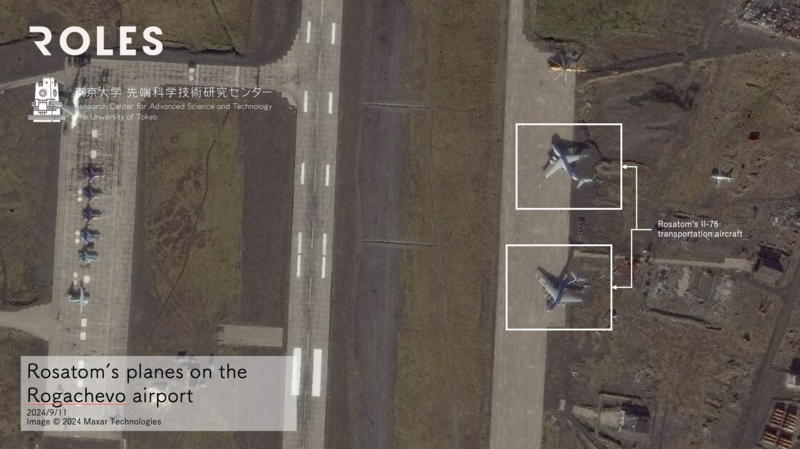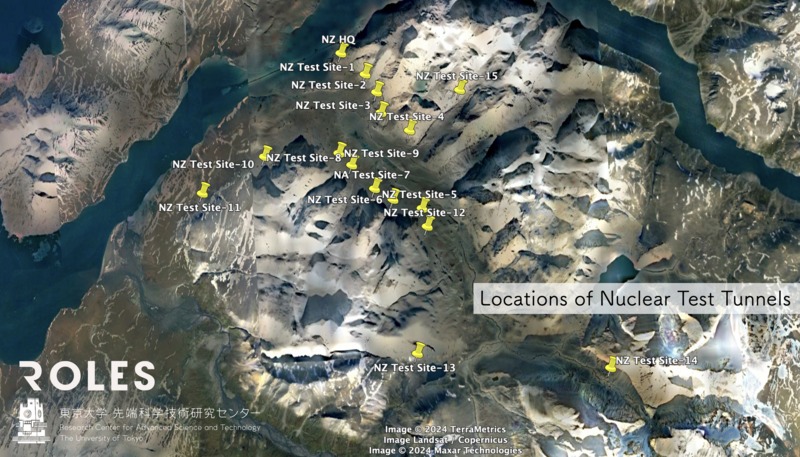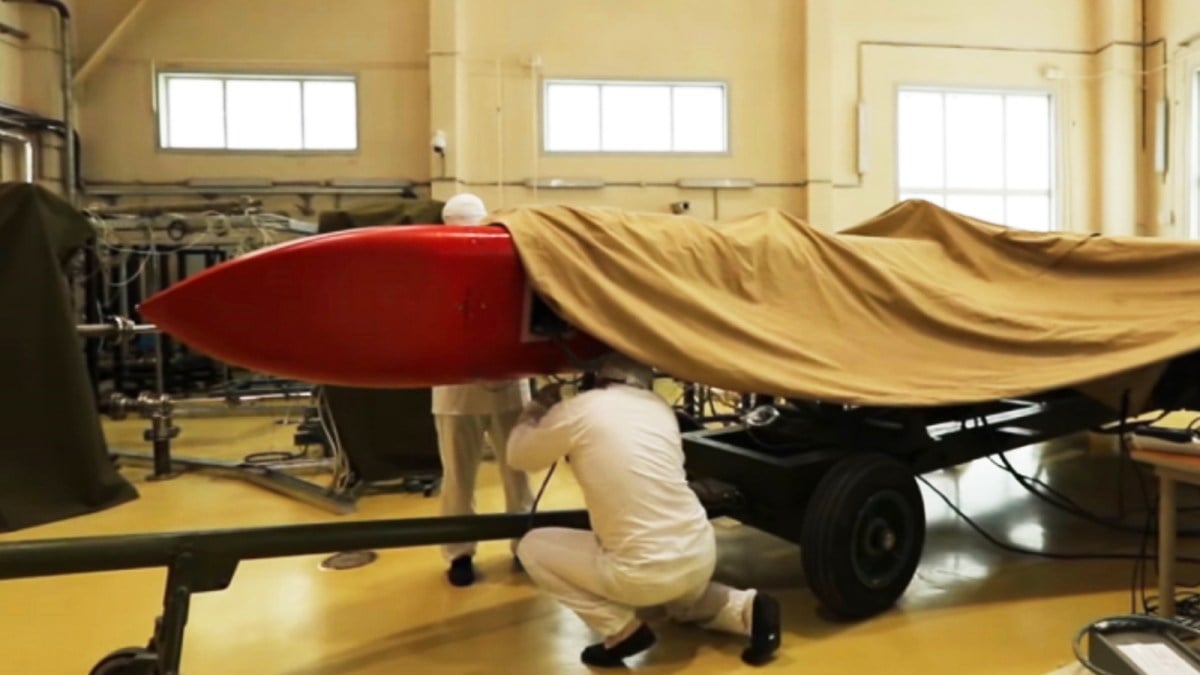According to recent satellite imagery analyzed by a Japanese think tank, tunnels are being prepared at Russia’s northern nuclear test site.
These developments, observed in September 2024, have sparked speculation about potential nuclear testing and the development of advanced weapons systems, particularly the Burevestnik nuclear-powered cruise missile.
In its latest report, The Research Center for Advanced Science and Technology’s Open Laboratory for Emergence Strategies (ROLES) at the University of Tokyo, published on September 18, 2024, based on satellite imagery, revealed significant construction activities at Russia’s northern nuclear test site on Novaya Zemlya.
The center has been closely monitoring Russia’s activities on Novaya Zemlya through satellite images for a long time.
Russia’s Nuclear Test Site
During the summer, ROLES observed for the first time that soil was being removed from nuclear test tunnels. Additional soil movement was noted even after summer.
The recent activities at Novaya Zemlya have led to speculation about Russia’s intentions regarding nuclear testing and weapons development. Several factors contribute to these concerns.
Last year, Mikhail Kovalchuk, a prominent Russian scientist and president of the Kurchatov Institute, who is considered a close advisor to President Putin and often referred to as one of his “cashiers,” advocated for resuming nuclear tests at Novaya Zemlya in an interview with the state-run news agency Ria Novosti.
“It is enough to carry out tests at Novaya Zemlya at least once. It is the right thing to do. That would compel the West to negotiate with Russia,” he argued.
Satellite Images Reveals
In Sept 2023, Norway’s largest printed newspaper, Aftenposten, compared satellite images from 2021 and 2023, noting the emergence of numerous new buildings and structures in the area.
Throughout September, the ROLES think tank has reported several observations based on recently published satellite images.
One image, dated about a week ago, showed a transport ship anchored in Matotškin Šari, located in the center of the main island, on September 10.

The following day (Sept 11), two Il-76 transport planes from the nuclear energy company Rosatom were spotted at the airport.

Notably, September’s satellite images revealed significant soil removal, suggesting extensive underground work may be underway within the tunnels, potentially related to surface excavation in the surrounding area.

Additionally, the images confirmed large-scale construction on Novaya Zemlya, along with the arrival of substantial transport ships and Rosatom aircraft.
While the ROLES think tank emphasizes that it cannot assess whether these construction activities are linked to Russia’s ongoing nuclear tests, it indicates that something significant is being prepared in Novaya Zemlya, warranting close attention.
Flying Chernobyl: The Burevestnik Missile
Many analysts now believe that construction work on Novaya Zemlya is linked to testing the Burevestnik – a Russian low-flying, nuclear-powered, nuclear-armed cruise missile.
Publicly available information indicates that the missile is launched using a standard rocket engine, after which a small nuclear reactor is activated in flight, allowing it to cover significant distances. This operational principle has earned the Burevestnik the nickname “Flying Chernobyl.”

The missile has undergone multiple tests, with mostly unfavorable results. In 2019, a test near Arkhangelsk went awry, resulting in at least five fatalities and prompting evacuation preparations in the nearby village of Sopka. Russia has not acknowledged the test’s failure, leaving the details surrounding the incident unclear.
However, as reported by The Diplomat, a test from Novaya Zemlya in 2017 was deemed partially successful by U.S. intelligence sources. The “Flying Chernobyl” managed to stay airborne for about two minutes before Russia began efforts to retrieve its missiles from the seabed.
History Of Nuclear Testing At Novaya Zemlya
Officially, the Soviet Union or Russia have not conducted any nuclear tests since 1990. Of the two major nuclear test sites established by the Soviet Union, Semipalatinsk was closed shortly before the Soviet collapse and later fell outside Russian jurisdiction due to Kazakhstan’s independence.
In contrast, the Novaya Zemlya nuclear test site remains under the control of the Russian Ministry of Defence. This site has been used for subcritical tests to verify the reliability of nuclear warheads, among other purposes.
The first tests at Novaya Zemlya were conducted in the 1950s. However, a significant incident occurred in 1987 when a test explosion in the Matotškin Šari tunnel went catastrophically wrong, resulting in the tunnel’s shafts collapsing and releasing a radioactive cloud into the atmosphere. Russia’s last nuclear test at Novaya Zemlya took place in 1990.
In 2019, the U.S. government suggested that some nuclear-related experiments might be underway. Novaya Zemlya is believed to be the ‘testing home’ of the Burevestnik nuclear-powered cruise missile.
In Finland, the Department of Seismology detected the explosion, and information about radioactive releases was reported by Norway. According to Yle, the Radiation Protection Center collected samples from dairy farms in Lapland weeks after the incident, finding radioactive iodine in milk from a dairy farm in Ivalo.
Arctic Enigma
The recent observations at Novaya Zemlya signal a potentially significant development in Russia’s nuclear capabilities and testing programs. However, ROLES researchers have not been able to determine whether the observed earth movements are solely related to tunnel construction or if they also involve surface construction activities.
While the exact nature of the activities remains unclear, the combination of construction work, increased transportation, and historical context suggests preparations for significant operations, making the possibility of nuclear missile testing a viable consideration.
The activities at Novaya Zemlya have raised concerns among international observers and neighboring countries.
Previous incidents, such as the 2019 explosion, have demonstrated the potential risks associated with Russia’s nuclear activities. Detection of radioactive materials in neighboring countries following such incidents underscores the regional impact of these tests.
- Shubhangi Palve is a defense and aerospace journalist. Before joining the EurAsian Times, she worked for E.T. Prime. In this capacity, she focused on covering defense strategies and the defense sector from a financial perspective. She offers over 15 years of extensive experience in the media industry, spanning print, electronic, and online domains.
- Contact the author at shubhapalve (at) gmail.com




